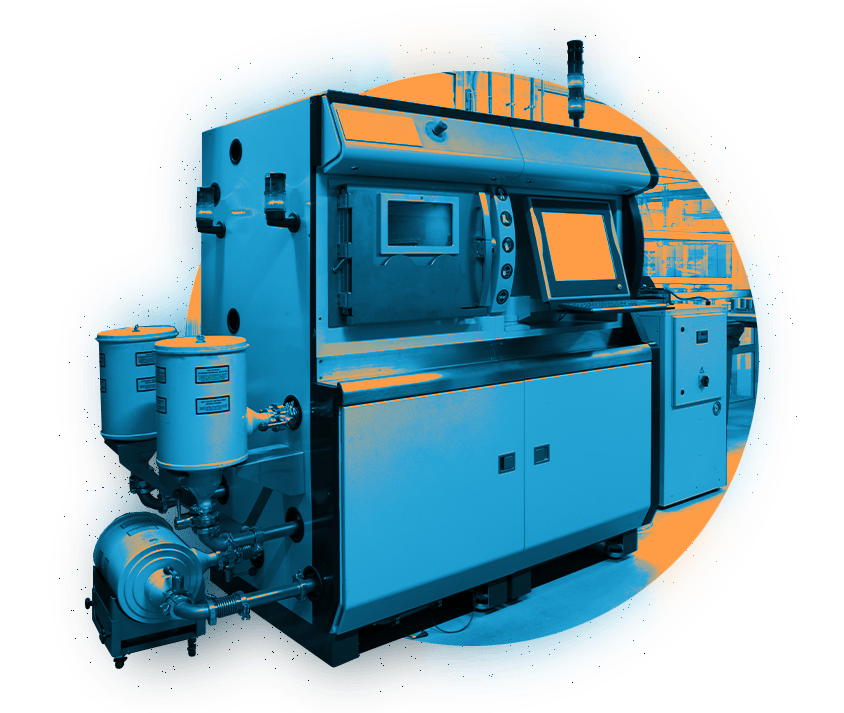The U.S. Navy will be hosting its annual “HackTheMachine” contest from March 23rd- 26th: this time, with a focus on 3D printing.
HackTheMachine is a Navy outreach program designed to get members of the public working alongside the Navy to solve the latter’s technological problems. The annual contest takes the form of a “hackathon,” with a set of challenges and “games” that each team has to complete over the course of 3-4 days.
“The military’s aviation community attracts talent through the Blue Angels,” said Lt. Cmdr. Arthur Anderson, of the Naval Systems Sea Command. “Well, HACKtheMACHINE is our Blue Angels for geeks. We want to attract the attention of talented people who might have not thought of serving in the Navy, whether as a Sailor or civilian.”
The program’s most famous “track” is its cybersecurity challenge, where the final “game” every year is “breaking in” to a warship or a Navy testbed. But this year, its third track is all about 3D printing. The exact goal of the “Heavy Metal” track is not explained on the HackTheMachine website, only that it will be a metallic 3D printing challenge “related to the Covid 19 pandemic.” Participants will be asked to make a data package and send in a printed prototype to be tested.

This year’s Heavy Metal track, focused on metallic 3D printing, will award $30,000 in prize money (Image via NAVSEA).
The program ran its first 3D printing-related track at Brooklynn’s HackTheMachine 2019, where the third track challenged participants to design parts that could be remotely printed at sea to repair ships. During the conference, participant Kade Heckel discovered a security threat in one of the 3D printers being used. 2018’s third track dealt with apps, while 2017 asked participants to use VR and AR tools for a disaster relief situation. In 2020, there was no third track. Because of COVID-19, the Navy hosted a virtual HackTheMachine, with only their famous cybersecurity attack challenge available.
HackTheMachine’s switch to focus on 3D printing is not especially surprising. The Navy put their first printer on a ship back in 2014, and has been loading far more printers onto boats since 2018’s Operations for Fleet Readiness and Logistics put an emphasis on additive manufacturing. In the last six months, Navy engineers have used 3D printing to make prototype antenna mounts for Navy aircraft, collaborated with Xerox on their ElemX Metal 3D Printer, and has worked on a set of 3D printed antennas and arrays for their radar tech.

While HackTheMachine is best-known for its cybersecurity challenge (where participants “hack” into Navy ships) this year’s competition features a track focussed around metallic 3D printing (Image via NAVSEA).
Ultimately, the Navy hopes that its March 2021 iteration of HackTheMachine will help them recruit and solve their pressing problems.
“Although the competition’s goal is for teams to showcase their talent, the ultimate goal is to leverage the data and techniques from the challenges to build a roadmap with which the Navy can expand its cybersecurity practices,” says Anderson.
Subscribe to Our Email Newsletter
Stay up-to-date on all the latest news from the 3D printing industry and receive information and offers from third party vendors.
You May Also Like
3D Printing News Unpeeled: A $3000 SLS System, Construction Subsidies and Parameters
The Housing Affordability Crisis is one of Canadian President Trudeau’s biggest issues. Now the government has made subsidies available, including scaling new technologies, 3D printed housing and libraries of reapproved...
“Bundled Light” Enables High Quality Plastic 3D Printing from LEAM
Naturally, we expect current 3D printing methods to continuously improve, but it continues to do so in the most surprising ways. The latest development comes from LEAM, a startup spun...
Each to Their Own: Exploring Creality’s Latest Ender Trio as the Company Strengthens Its Commitment to 3D Printing Advocacy
Creality has reaffirmed its commitment to promoting 3D printing. The launch of the Ender-3 V3 SE, Ender-3 V3 KE, and Ender-3 V3 showcases the company’s dedication to catering to diverse...
3D Printing News Briefs, March 23, 2024: AM in the US Coast Guard, Navy, & More
In today’s 3D Printing News Briefs, we’re discussing the use of 3D printing in various branches of the military, including the U.S. Coast Guard, the U.S. Navy, and the German...































